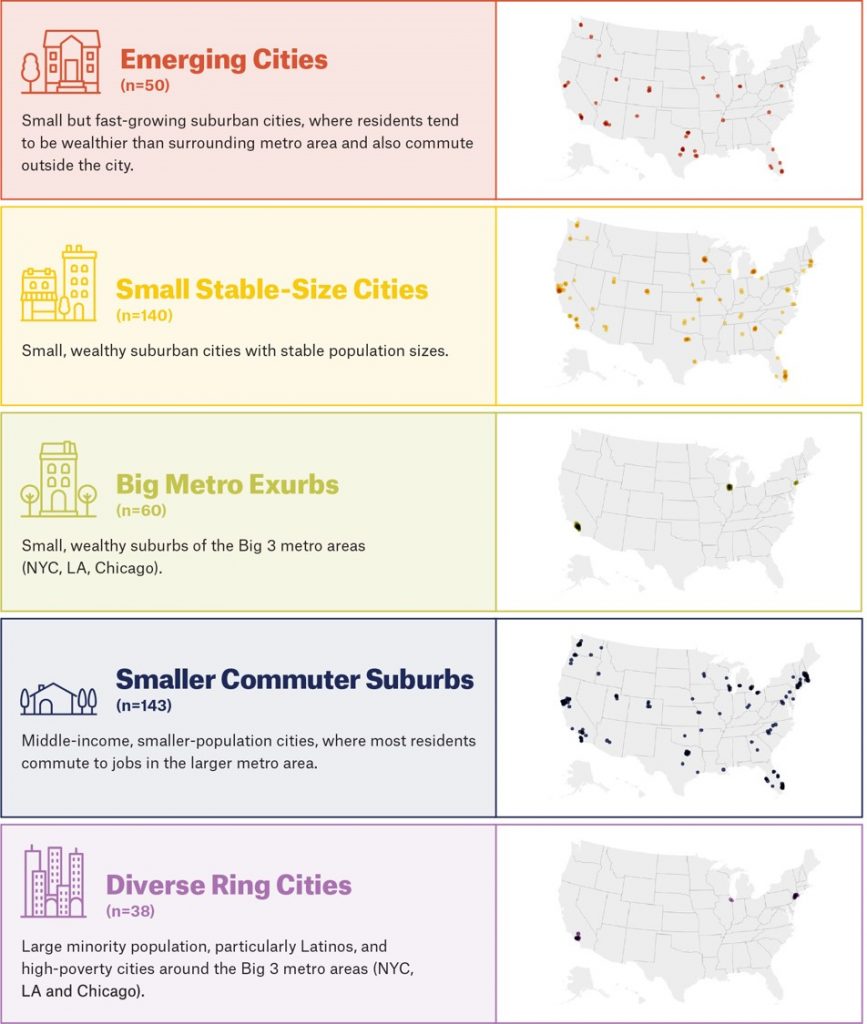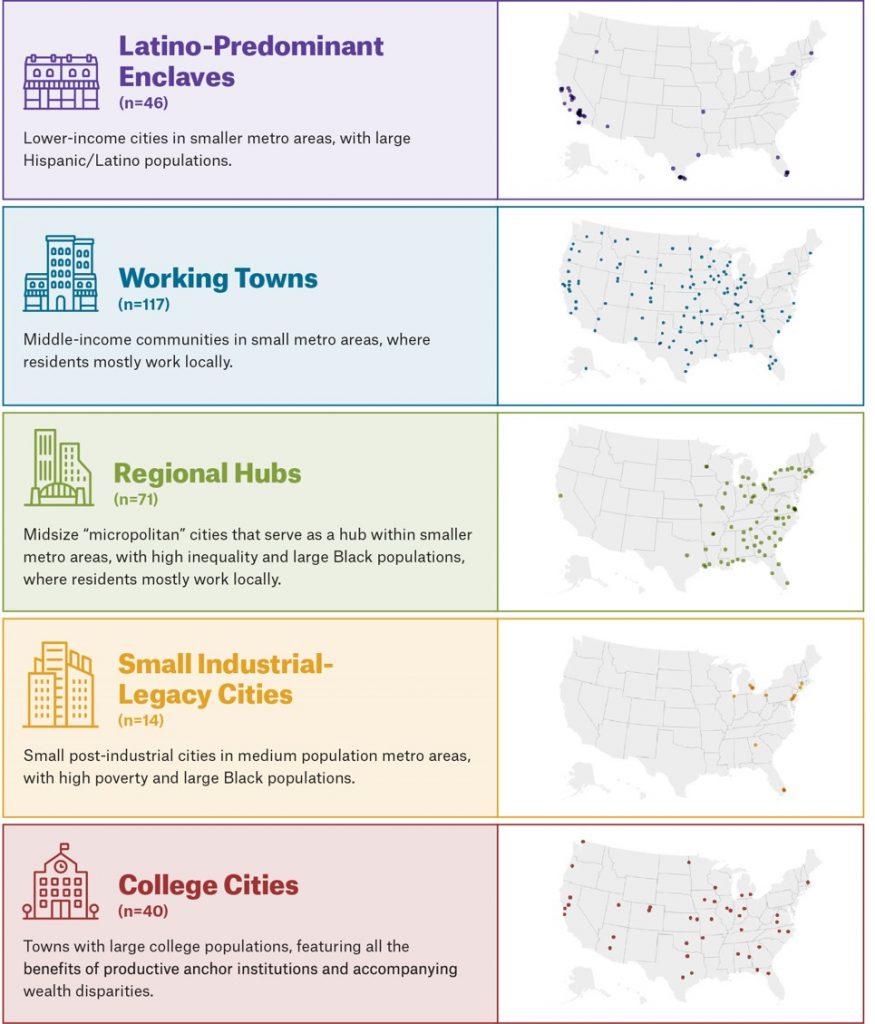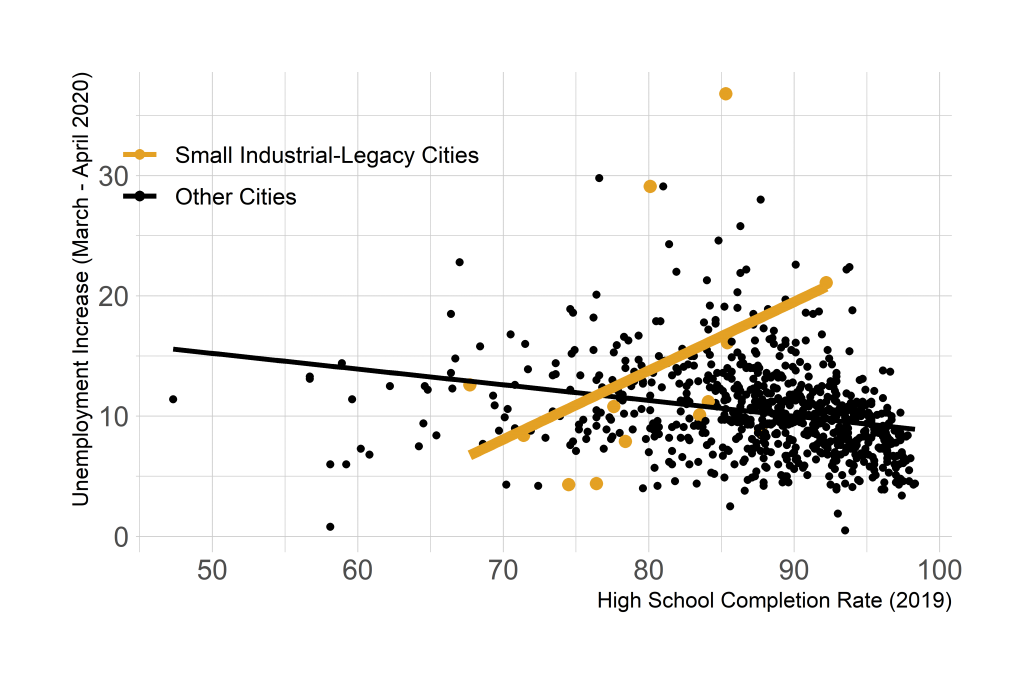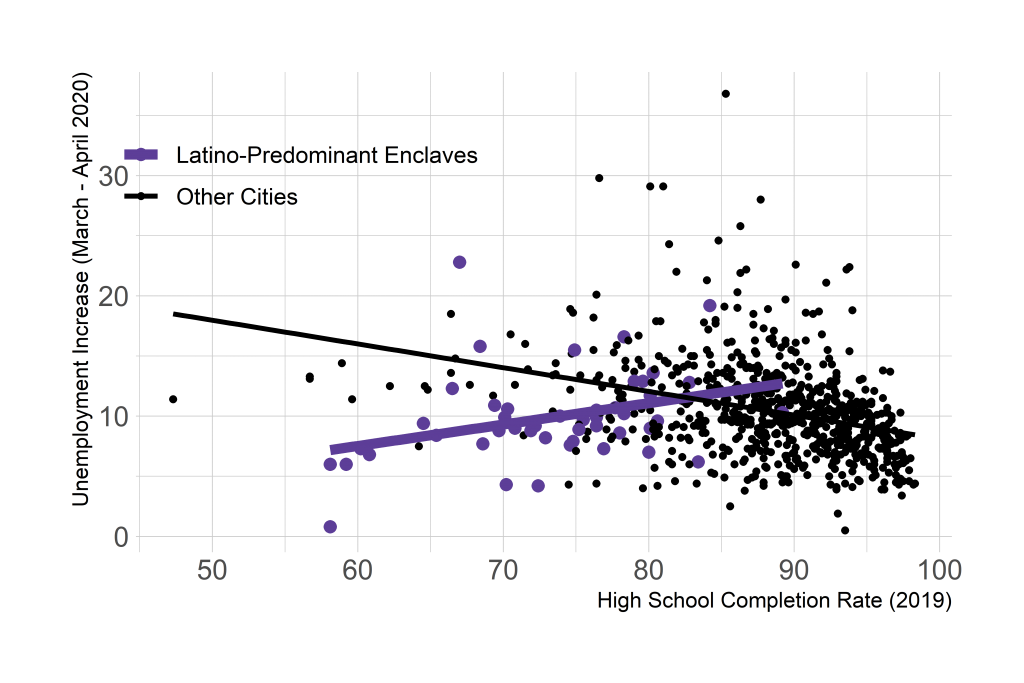How Covid-Related Shutdowns and Education Level Affected Unemployment Across America’s Cities
Covid-19 has touched almost every aspect of American life over the past 18 months. In this moment, cases continue to peak and decline in seemingly endless waves, even as we inch toward economic recovery. Financial distress due to the pandemic has certainly been worse for lower wage workers, who were hit hard in the early days as the U.S. experienced a surge of job losses, with shutdowns affecting almost every industry. Learning more about who was affected most can allow communities to target recovery efforts to the most vulnerable.
Evidence shows that higher educational attainment (graduating high school or college) is associated with higher employment rates and wages, and educational attainment is also potentially an area where local governments can make a clear, tangible impact. Focusing on small and midsize cities, defined here as cities with populations of 50,000 to 500,000, we used data from the City Health Dashboard to explore unemployment rates during the initial Covid-19 wave and one year later, and how education might have been a protective factor against the impact of Covid in cities.
Spring 2020 Shutdowns and Unemployment
Between March and April 2020, unemployment increased from 4% to almost 16%, on average, across small and midsize cities. Cities associated with certain industries — like tourism and entertainment — were hit hardest by the Covid shutdowns. But this isn’t the whole picture: Educational attainment somewhat moderated that effect, meaning that cities with higher average educational attainment had a better trajectory than those with lower educational attainment. According to Dashboard data, on average, cities in which a higher percentage of the population had completed high school experienced smaller spikes in unemployment. Fishers, Indiana, for example, has a high school completion rate of 98%, and experienced an unemployment increase of 6.5 percentage points.
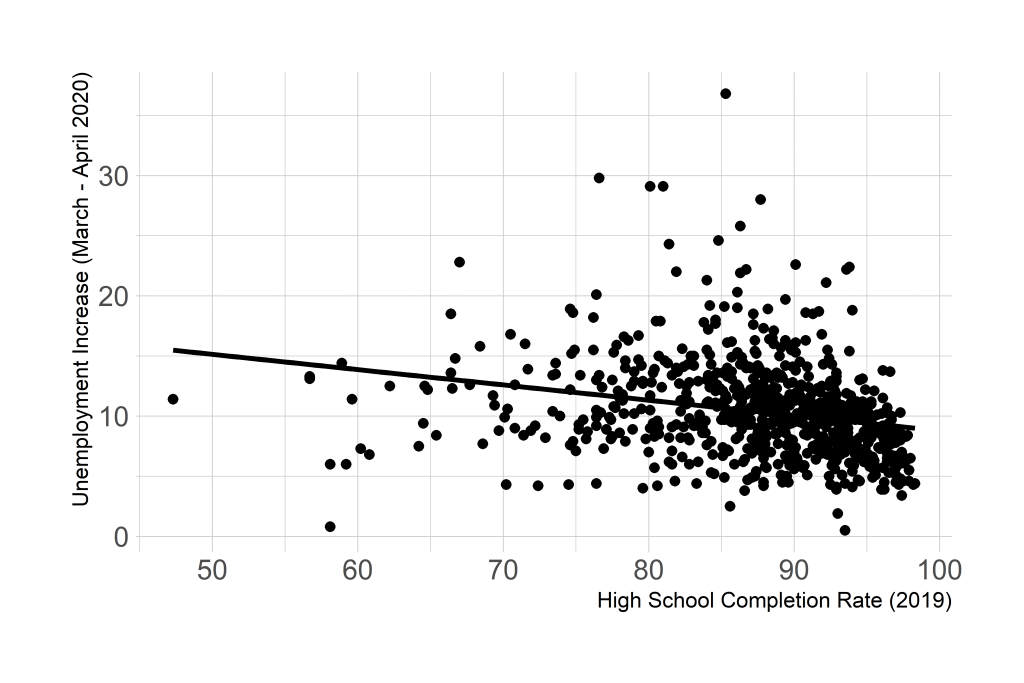
Exploring Covid-related Unemployment Across City Types
There is also much to be gleaned from looking at this pattern across City Types. Similar to the American Communities Project’s Community Types, which categorize all U.S. counties into 15 different types, the City Health Dashboard categorized small and midsize U.S. cities into 10 different types based on economic, employment, and demographic characteristics. These City Types allow us to explore health and equity outcomes across similar places, providing a better understanding of how social and economic conditions drive differences in health outcomes.
Most City Types reflected a similar pattern to that described above, where high school completion moderated the impact of Covid on employment. A few Types, however, demonstrated an opposing trend. Small Industrial-Legacy Cities and Latino-Predominant Enclaves, on average, had higher high school completion rates, yet large increases in unemployment. This surprising trend indicates that, in some places, educational achievement wasn’t as protective from the shocks of the pandemic and resulting shutdowns that it was in other places. For example, in Kissimmee, Florida, a Latino-Predominant Enclave primarily driven by the tourism industry and with a high school completion rate of 84%, unemployment spiked by almost 20%.
What we know about cities in these two Types provides some insight into this unexpected trend. Of the 10 City Types, Small Industrial-Legacy Cities and Latino-Predominant Enclaves have mid to high poverty rates, and the largest Black and Hispanic populations (respectively) of all cities included in our research. Historic disinvestment and bias against these specific populations of color impacts current opportunities, specifically job and advancement opportunities. Interestingly, where educational attainment was low and unemployment already high, Covid shutdowns had less of an impact on job loss — but also fewer signs of recovery a year later.
Spring 2021 and Recovery Moving Forward
Just as educational attainment was associated with lower Covid-related job loss in some places in the early days of the pandemic, on average, cities with higher educational attainment also had more job recovery in the early stages of broadscale national recovery efforts after the vaccine distribution began, around March 2021. This trend is unsurprising, as we think about which industries have been fastest to reopen and which have benefited from the ability of employees to work remotely.
As cities attempt to shift into recovery and businesses return to near-full capacity, it is critical for city leaders to consider equitable opportunities for those who may have been left behind. The United Way’s ALICE data — “Asset-Limited, Income-Constrained, Employed” — can provide additional insights into who and where these individuals live and how best to support them during recovery. Programs and policies to increase educational attainment, like child care subsidies, mentoring programs, vocational training, and others, may also benefit unemployed individuals and help get people back to work sooner.
[You can explore these programs and more from the Dashboard’s Take Action center.]
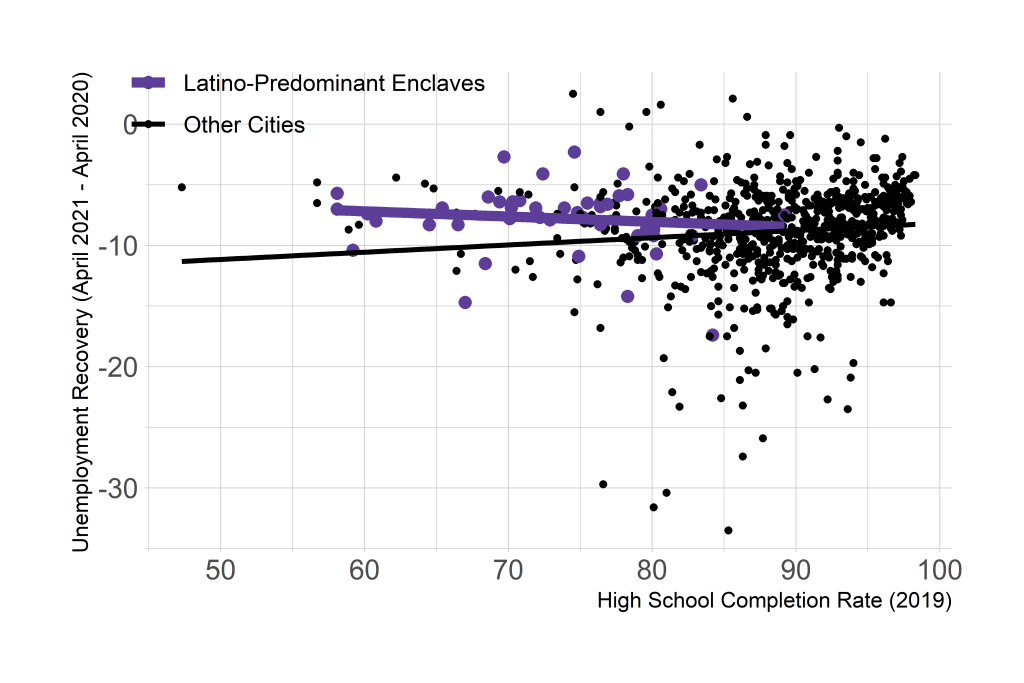
While some City Types have benefited from the protective nature of high educational attainment, the opposing pattern described above for Latino-Predominant Enclaves and Small Industrial-Legacy Cities also holds for recovery, too. For these two City Types, on average, higher educational attainment was associated with less job recovery. In these cities, the same types of programs and policies that advance education may have less of an impact on employment patterns. However, all cities can benefit from policies that raise wages and improve benefits so workers can access diversified, meaningful job opportunities and, just as importantly, support their families in doing so.
These City Health Dashboard data show that educational attainment may protect some workers from Covid-related job losses, but not all. As cities look to recover and rebuild, it’s important for policymakers to understand the unique set of circumstances of their populations to implement policies that promote equitable growth for all.
 Becky Ofrane is Manager of Engagement and Partnerships for the City Health Dashboard housed at NYU School of Medicine’s Department of Population Health. Her work involves connecting with partners and city leaders to get data into the hands of those who can make a difference in health and equity.
Becky Ofrane is Manager of Engagement and Partnerships for the City Health Dashboard housed at NYU School of Medicine’s Department of Population Health. Her work involves connecting with partners and city leaders to get data into the hands of those who can make a difference in health and equity.
Special thanks to Taylor Lampe for data analysis, Dr. Yuruo Li for analysis and figures, and Shoshanna Levine and Samantha Breslin for research support.

